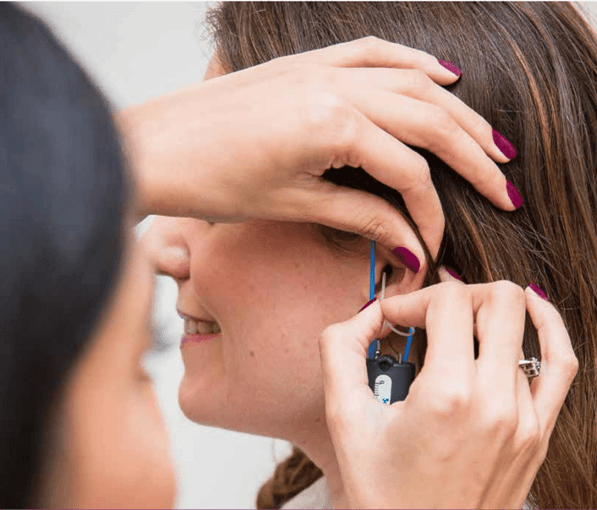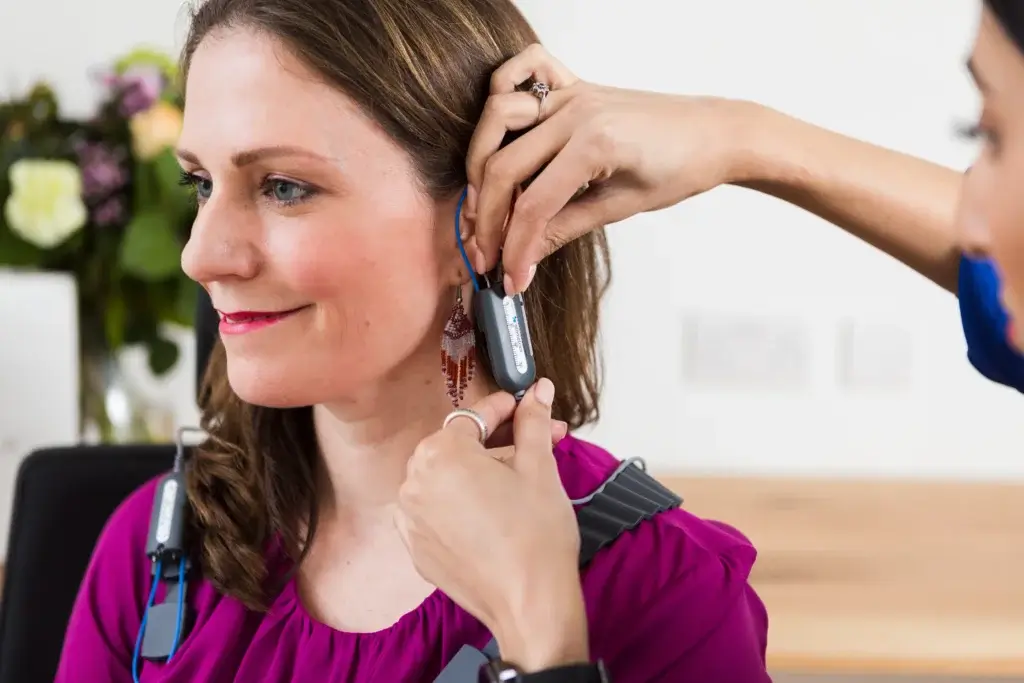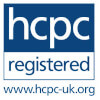hearing aid programming using real ear measurements
Real ear measurements (REMs) have revolutionised the field of hearing aid programming. Our Audiologists use this powerful tool that enables us program to fine-tune hearing aids for optimum performance. In this article, we will explore the concept of REMs and their benefits in hearing aid programming.

Understanding Real Ear Measurements for Hearing Aid Programming
Real ear measurements involve the use of a small probe microphone that is placed in the ear canal alongside the hearing aid during programming. By measuring the sound pressure level within the ear canal, our audiologists gain valuable insights into how the hearing aid is performing for a specific individual. This data allows us to make precise adjustments to the hearing aid settings, ensuring that the you receive the most appropriate amplification for your unique hearing needs.
One of the key advantages of REMs is the ability to account for individual differences in ear canal acoustics. Every person has a slightly different ear canal shape and size, which can impact the way sound is received and processed by the hearing aid. REMs help our audiologists tailor the hearing aid settings to account for these variations, resulting in a more accurate and customised fitting.
When it comes to hearing aids, one size does not fit all. Each person’s hearing loss is unique, and therefore, your hearing aid settings need to be personalised to meet your specific needs. Real ear measurements (REMs) play a crucial role in achieving this bespoke prescription.
Imagine a scenario where two individuals with similar hearing loss levels are fitted with the same hearing aid model. Without REMs, the hearing aids would be programmed based on a “click-n-fit” method with generic assumptions about how the device should perform. However, this approach overlooks the fact that each person’s ear canal has its own characteristics that can significantly affect sound transmission.
REMs provide our audiologists with objective data about the actual sound levels reaching the eardrum. By placing a small probe tube in the ear canal alongside the hearing aid, our audiologists can measure the sound pressure level and compare it to the target amplification prescription you need to hear at your best. This comparison allows us to make precise adjustments to the hearing aid settings, ensuring that you receive the most accurate amplification possible.
One might wonder, why is it important to consider individual differences in ear canal acoustics? Well, the answer lies in the fact that even slight variations in the shape and size of the ear canal can have a significant impact on how sound is processed by the hearing aid. Think of it as a unique fingerprint for your ears.
For instance, if a person has a narrower ear canal, the sound waves may be amplified differently compared to someone with a wider canal. By using REMs, our audiologists can account for these variations and fine-tune the hearing aid settings accordingly. This bespoke approach ensures that your hearing aids provides optimal amplification for you, resulting in improved sound quality and overall satisfaction.
Moreover, REMs also help audiologists identify any issues with the physical fit of the hearing aid. Sometimes, the hearing aid may not be properly inserted into the ear canal, or may have the wrong dome fitted causing sound leakage or discomfort. By monitoring the sound pressure level with REMs, our audiologists can detect such issues and make the necessary adjustments to ensure a snug fit and optimal performance for you.
In conclusion, real ear measurements are an essential tool in the fitting and programming of hearing aids. By considering individual differences in ear canal acoustics and objectively measuring the sound pressure level, our audiologists can provide a more personalised and accurate hearing aid experience. So, the next time you visit your audiologist for a hearing aid fitting, make sure to ask about real ear measurements and how they can benefit you.
Exploring the Benefits of Real Ear Measurements for Hearing Aid Programming
The benefits of using Real Ear Measurements (REMs) in hearing aid programming are numerous and can greatly enhance the overall effectiveness of the hearing aid fitting process. This validation process not only helps build trust and confidence between our audiologists and the patient but also provides tangible evidence of the hearing aid’s performance.
One of the key advantages of REMs is that they enable our audiologists to make fine adjustments to the hearing aid based on the your real-world listening experiences. By analysing the REM data and considering various factors such as noisy environments, speech intelligibility, and individual preferences, our audiologists can optimise the hearing aid settings to improve your overall listening experience.
Furthermore, REMs provide valuable insights into the effectiveness of the hearing aid’s amplification and sound processing capabilities. By comparing the measured real ear response with the desired target response, our audiologists can identify any discrepancies and make necessary adjustments to ensure optimal sound quality and audibility. This meticulous approach not only improves speech clarity but also enhances the user’s ability to perceive subtle nuances in music and other auditory stimuli.
Another significant benefit of REMs is their ability to aid in the detection and correction of potential issues that may arise during the hearing aid fitting process. By closely examining the REM data, our audiologists can identify any anomalies or irregularities in the hearing aid’s performance, such as distortion or insufficient amplification. This allows for timely troubleshooting and adjustment, ensuring that you receive the maximum benefit from your hearing aids.
In conclusion, Real Ear Measurements offer a multitude of benefits in hearing aid programming. From providing objective validation of the hearing aid’s performance to enabling fine adjustments based on real-world listening experiences, REMs play a crucial role in optimising the user’s overall listening experience. By leveraging REM data, audiologists can customise hearing aid settings, improve speech intelligibility, and enhance sound quality, ultimately enhancing the user’s quality of life and fostering a stronger patient-audiologist relationship.
Advanced Hearing Aid Programming with Real Ear Measurements
REMs have advanced over the years, providing audiologists with an even deeper understanding of hearing aid performance. The latest REM systems utilise sophisticated algorithms and software, allowing for more accurate measurements and detailed analysis. This technological progress empowers audiologists to fine-tune hearing aids with unprecedented precision, ensuring optimal outcomes for their patients.
Furthermore, advanced REM systems often integrate with hearing aid fitting software, creating a seamless workflow for audiologists. This integration enables efficient data transfer and simplifies the programming process, saving time and minimising errors. Audiologists can focus more on patient care rather than getting caught up in technicalities, ultimately benefiting both the professionals and the hearing aid users.
Advantages of Real Ear Measurements over Traditional Hearing Aid Programming
Prior to the availability of REMs, hearing aid programming relied heavily on subjective information provided by the user. While this input was valuable, it did not provide precise measurements of how the hearing aid was functioning in situ. REMs offer a more objective and scientific approach, ensuring that the hearing aid is adjusted to accurately match the user’s hearing profile.
Another advantage of REMs is their ability to address individual differences in hearing perception. Traditional hearing aid programming often relied on generic fitting formulas that did not account for variations in ear canal acoustics. With REMs, those differences are taken into account, resulting in a more bespoke and effective hearing aid fitting.
The Role of Audiologists in Hearing Aid Programming with Real Ear Measurements
Our audiologists play a crucial role in the successful implementation of hearing aid programming using real ear measurements. Our extensive knowledge of hearing and amplification, coupled with our expertise in REM techniques, allows us to make informed decisions when adjusting hearing aid settings.
In addition to our technical skills, our audiologists provide essential guidance and support our hearing aid users. We explain how REMs work, discuss the benefits of using this approach, and address any concerns or questions the our patient’s may have. This collaborative approach ensures that our patients are actively involved in the programming process and understand the rationale behind the adjustments made.
In conclusion, Real Ear Measurements have revolutionised hearing aid programming, allowing for highly bespoke and accurate fittings. The objective data provided by REMs enables our audiologists to fine-tune your hearing aids based on your individual and unique hearing needs. By using this advanced technique, our audiologists can enhance the effectiveness of hearing aids and ultimately improve your quality of life.














